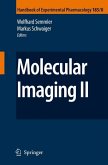The aim of this textbook of molecular imaging is to provide an up to date review of this rapidly growing field and to discuss basic methodological aspects necessary for the interpretation of experimental and clinical results. Emphasis is placed on the interplay of imaging technology and probe development, since the physical properties of the imaging approach need to be closely linked with the biologic application of the probe (i.e. nanoparticles and microbubbles). Various chemical strategies are discussed and related to the biologic applications. Reporter-gene imaging is being addressed not only in experimental protocols, but also first clinical applications are discussed. Finally, strategies of imaging to characterize apoptosis and angiogenesis are described and discussed in the context of possible clinical translation.
From the reviews:
"Topics covered are intended for a sophisticated multidisciplinary audience. ... serves as an introduction to the expansive field of molecular imaging while developing in the reader an understanding of many of the complexities that allow novel approaches to studying the physiology, biochemistry, and molecular biology of intact living systems. ... imaging scientists and clinicians who wish to learn more about the most advanced methods and applications of their craft should benefit from the coverage of the topics laid out in this book." (Geoffrey D. Clarke, Radiology, Vol. 256 (1), July, 2010)
"Topics covered are intended for a sophisticated multidisciplinary audience. ... serves as an introduction to the expansive field of molecular imaging while developing in the reader an understanding of many of the complexities that allow novel approaches to studying the physiology, biochemistry, and molecular biology of intact living systems. ... imaging scientists and clinicians who wish to learn more about the most advanced methods and applications of their craft should benefit from the coverage of the topics laid out in this book." (Geoffrey D. Clarke, Radiology, Vol. 256 (1), July, 2010)








